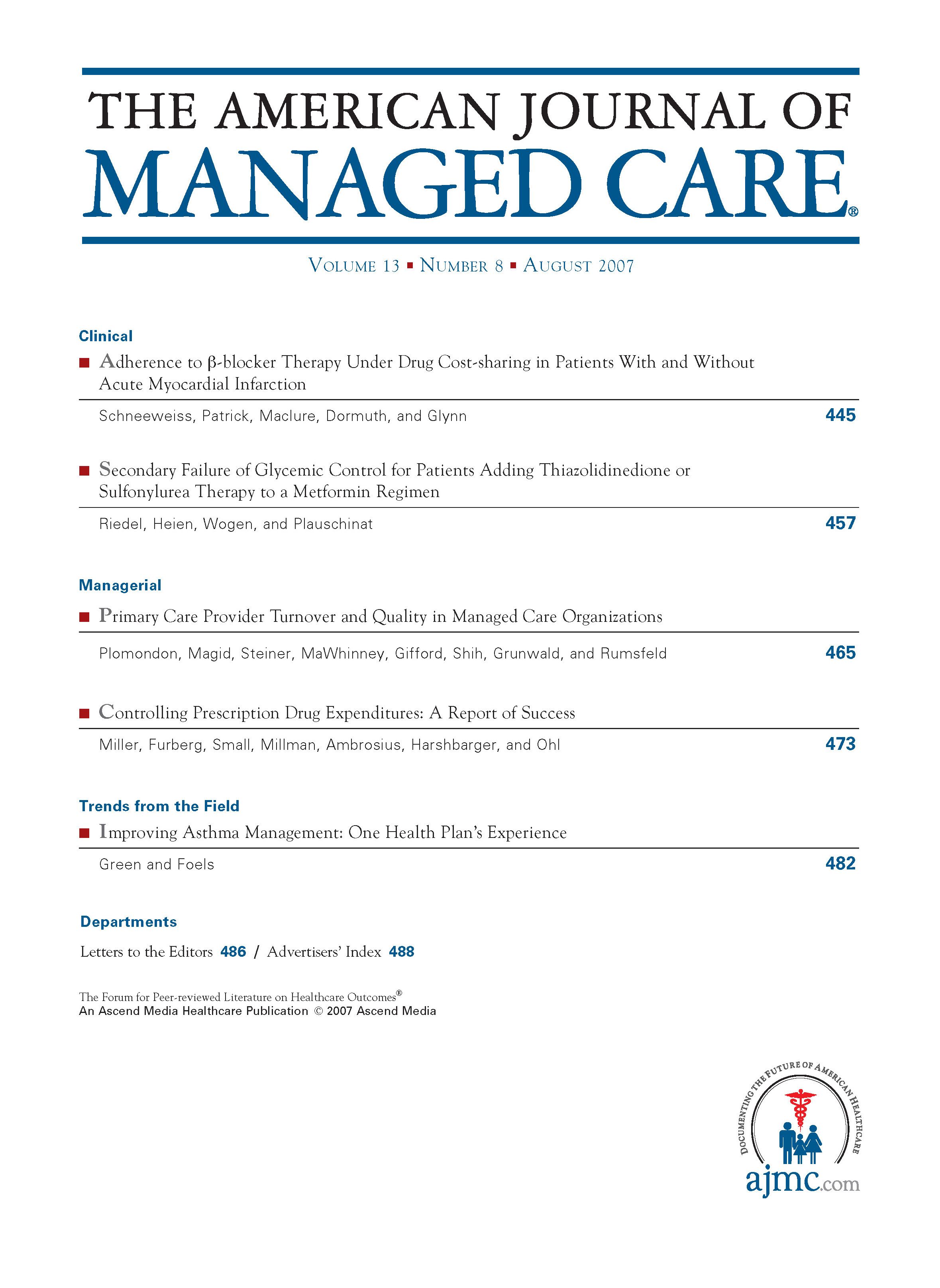- Center on Health Equity & Access
- Clinical
- Health Care Cost
- Health Care Delivery
- Insurance
- Policy
- Technology
- Value-Based Care
A Business Case for Quality
TO THE EDITORS:
It's the reimbursement,
stupid.
We were excited by the article by Dorr et al1 and its bottom line: In our ongoing work with Sheila Leatherman and colleagues atthe University of North Carolina to assess whether there is a business case forquality in Medicaid managed care, we are finding, as have Dorr et al, thatenhanced care management for high-risk chronically ill beneficiaries pays off—forthe healthcare payers investing in stratifying risk and designing and implementingthe interventions.
Yet even though we are pleased that health plans, state Medicaid agencies,and other payers now have more reason to invest in quality, we should worryabout the hospitals and physician groups that may incur losses from theseimprovements. Can we find ways to realign healthcare financing so that "win-win-win-win" or "gainsharing" scenarios (for purchasers-plans-providerspatients)can occur?
Because Medicaid has so many high-risk patients with serious chronic illnessesand because many of them are in managed care or disease management programswith the infrastructure and incentives to support targeted interventions,we intend to design a "business case for quality" evaluation project involving allof these stakeholders. We hope to learn how financing can be realigned, so thatwinning and losing can be more evenly shared for the betterment of the entirehealthcare system.
Stephen A. Somers, PhD
Melanie Bella, MBA
Author Affiliation:
From the Center for Health Care Strategies, IncCorrespondence Author: Stephen A. Somers, PhD, Center for Health Care Strategies,Inc, 200 American Metro Blvd, Ste 119, Hamilton, NJ 08619. E-mail:sasomers@chcs.org.
Reference
Am J Manag Care.
1. Dorr DA, Wilcox A, McConnell KJ, Burns L, Brunker CP. Productivity enhancement for primary care providers using multicondition care management. 2007;13:22-28.
IN REPLY:
We agree with the major points made by Bella and Somers (ie, that misalignedreimbursement stymies innovation in care management due to the lackof reward for high quality, patient-centered care); however, we believe thattheir summary mischaracterizes one of the novel findings of our article: that atleast 1 type of care management can overcome reimbursement hurdles throughefficiency gains in clinical practice. In fact, the bottom line might be bettersummarized to say that all parties have potential incentives (as well as disincentives)to change. It may be the reimbursement (per providers) or the prices (perpurchasers and insurers) or the technology, or it may be (and likely is) all of theabove, and more.
Our study did not look in depth at benefits to health plans; in fact, the higherproductivity of the providers translated into revenue enhancement for them andpotentially a net loss for insurers. However, the broader implications made by Bellaand Somers do make sense. Other analyses we have completed do indicate thatpurchasers and insurers have $2 to $3 benefit from every dollar charged fromprimary care clinics (mainly through reductions in hospitalizations). In addition,the ability of primary care practices to bear the burden of the larger redesignefforts—electronic health records, changing payment methodologies, and thelike—is extremely limited. Our more recent work has shown that vertical collaboratives—patients, purchasers, insurers, and providers—can work together to createsuccess and minimize risk in the way that Bella and Somers describe.
The primary point of our article is to consider, from the perspective of the primarycare clinics involved, what makes sense to do now while reimbursement ischanging. The article concludes that reorganizing primary care practices withinformatics-intensive programs like Care Management Plus can improve qualityand efficiency within the current multipayer reimbursement system. The time toact is now.
David A. Dorr, MD
Author Affiliation:
From Oregon Health & Science University.Correspondence Author: David A. Dorr, MD, Department of Medical Informatics,Oregon Health & Science University, Mailcode BICC, Portland, OR 97239. E-mail:dorrd@ohsu.edu.

Telehealth Intervention by Pharmacists Collaboratively Enhances Hypertension Management and Outcomes
January 7th 2026Patient interaction and enhanced support with clinical pharmacists significantly improved pass rates for a measure of controlling blood pressure compared with usual care.
Read More
HEDIS Glycemic Goal Achieved Using Control-IQ Technology
December 22nd 2025A greater proportion of patients with type 1 diabetes who used automated insulin delivery systems vs multiple daily injections achieved the Healthcare Effectiveness Data and Information Set (HEDIS) glycemic measure.
Read More
Linking Data to Determine Risk for 30-Day Readmissions in Dementia
December 22nd 2025This study found that certain characteristics in linked electronic health record data across episodes of care can help identify patients with Alzheimer disease and related dementias at high risk of 30-day readmissions.
Read More
Performance of 2-Stage Health-Related Social Needs Screening Using Area-Level Measures
December 19th 2025Limiting health-related social needs screening to lower-income areas would reduce screening burdens; however, this study found a 2-stage screening approach based on geography to be suboptimal.
Read More

